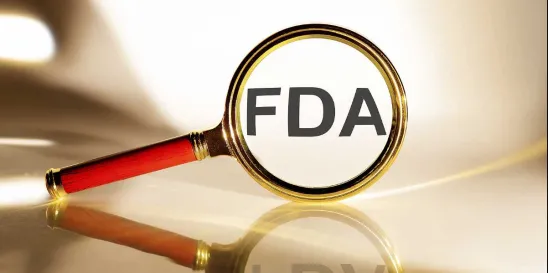It came as a surprise to nobody in health care circles when, on Friday, September 29, 2023, the Food and Drug Administration (FDA) publicly announced that its much-anticipated proposed rule on laboratory developed tests, or LDTs, had made it through internal regulatory review processes and would be published imminently in the Federal Register. The agency moved very quickly following the White House Office of Management and Budget’s clearance of the rule, which had occurred just two days prior, likely due to the high probability that the federal government was going to shut down on October 1 if Congress did not come to a budget agreement. That shutdown was narrowly averted over the weekend, but had it not been, the last significant publication of the Federal Register would have been on Tuesday, October 3.
Such quick action on the part of FDA provides further evidence that the Biden Administration’s health care leadership is prioritizing the modernization of federal LDT regulations. This action comes after Congress’s failure over the past several years to act on bipartisan legislation intended to accomplish the same goal – even though comprehensive legislation and a clear directive from Congress is the preferred route for all stakeholders (including FDA and its parents at the Department of Health and Human Services).
We previously wrote about the as-introduced bipartisan LDT reform legislation in 2021 here and in 2020 here. After the 117th Congress, which was replaced in January 2023 with a new and arguably even more hyper-partisan legislature, was unable to hold hearings on the subject or take any votes on the bill or others like it, FDA officials became much more vocal about their plans to advance notice-and-comment rulemaking to address what they perceive as a glaring hole in federal oversight of LDTs – the fact that evidence to demonstrate clinical validity of most new tests is not being reviewed by an oversight body and the public health is being adversely affected as a result. Considering that FDA has essentially been making this argument for over 15 years (those of us who have been part of the “FDA bar” for a while were likely all in attendance at the agency’s eventful public meeting on LDT oversight held during the summer of 2010), and LDTs continue to become increasingly used in clinical practice (most recent government estimates are that 70% of medical decisions rely on LDT results), this saga is one that really needs a decisive conclusion at some point soon. It may be that the agency’s proposal finally applies enough pressure to make Congress prioritize the issue, in which case the FDA’s rulemaking would become moot, but until then this administrative activity represents the current trajectory of LDT regulation.
Accordingly, now that the LDT proposed rule is available for everyone to review, interested stakeholders and members of the public should make their respective viewpoints known to the agency. Comments can be submitted to FDA for consideration for 60 days from the rule’s publication date (i.e., deadline of Monday, December 4, 2023 because the 60th day falls on the prior Saturday), although it is possible that FDA will end up extending the deadline if a request for extension is filed. While there is a lot to consider in terms of the impact of this FDA proposal, we wanted to provide our readers with a few topline points about its content. Mintz Health Viewpoints will continue to analyze these issues; we also welcome your thoughts or questions as you review the proposed rule with your own interests in mind.
1) FDA is proposing to amend the definition of “in vitro diagnostic product” in 21 C.F.R. § 809.3 to state that all in vitro diagnostics (IVDs) are devices under the Federal Food, Drug and Cosmetic Act (FD&C Act) “including when the manufacturer or these products is a laboratory.” This is the only textual change being proposed to the existing medical device regulations in the Code of Federal Regulations.
2) The current agency policy of enforcement discretion towards LDTs (which applies only when the tests are designed, manufactured, and used within a single laboratory certified under the Clinical Laboratory Improvement Amendments of 1988, or CLIA, to perform high complexity testing) would be phased out in five stages over the course of four years. The phase-out approach is intended to avoid “undue disruption to the testing market, including undue disruption to the provision of care.” The agency’s discussion in the proposed rule preamble offers a variety of public health rationales for why its historical enforcement discretion policy is not appropriate in today’s health care environment. Among other reasons, FDA notes that it is “concerned” that firms are offering IVDs as “LDTs” even when the tests are not designed, manufactured, and used within a single laboratory and therefore do not fall within the agency’s definition of an LDT.
3) The agency emphasizes that expressly including LDTs within the scope of its medical device regulations does not mean that all such products will be required to go through an FDA premarket review process. Because the FD&C Act and FDA’s implementing regulations for its statutory device authorities require only medical devices/IVDs with significant risks necessitating special controls or performance standards to be approved or cleared before they can be marketed commercially, the agency is estimating that “approximately 50 percent of IVDs offered as LDTs would not require premarket review.”
4) FDA tries to get ahead of the “innovation argument” against new regulations by devoting a significant portion of the proposed rule’s preamble discussion on how the reforms would benefit the IVD industry as a whole. This is an important defensive tactic on the agency’s part, in light of the certain lawsuits that will be filed in response to the proposed rule, and it will be interesting to see the extent to which the courts consider such arguments. Specifically, FDA explains its view that IVD (those not marketed as “LDTs”) manufacturers have been operating with disincentives to innovate because they compete directly with LDT manufacturers whose tests and facilities do not have to comply with medical device regulatory requirements. The agency posits that “Rectifying the current imbalance in oversight may foster innovation by manufacturers who are positioned to make safe and effective novel tests available to many labs.”
The proposal does not presently include any exemptions for particular clinical laboratory settings (e.g., those that operate within academic medical centers). Rather, FDA is requesting comments on whether it should establish specific exemptions to the proposed approach of treating essentially all LDTs as IVDs/medical devices (with the exception of LDTs of the type offered in or before 1976, those intended for law enforcement purposes, and Human Leukocyte Antigen tests designed, manufactured, and used in a single lab certified under CLIA for high complexity testing) and, if stakeholders believe additional exemptions are warranted, public health rationales to support such arguments. Stakeholders who wish to advocate for the creation of regulatory exemptions or exceptions for specific laboratory tests or settings should be sure to submit their written comments to FDA by the deadline so they receive adequate consideration during the rulemaking process.





 />i
/>i

